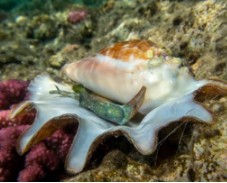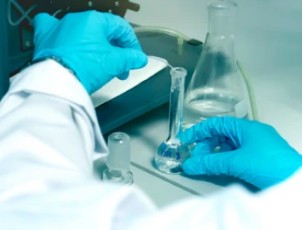
Cadmium is a kind of toxic heavy metal that is harmful to the human body and mollusks, with the characteristics of long residual time, accumulation, transferable accumulation along the food chain, concealment, and irreversibility. With the development of industrialization, a large amount of cadmium enters the ecological environment with wastewater discharge and surface runoff, causing pollution of the aquatic biosphere and affecting the safety of mollusks. In addition, feed processed from mollusks and their offal containing large amounts of cadmium can also cause excessive cadmium levels in farmed animals, thus causing problems with their food safety. Lifeasible specializes in developing solutions for determining cadmium in mollusks by analyzing their cadmium content in mollusks, their ability to respond to heavy metals, and evaluating the mollusk's living environment.
Cadmium is a heavy metal contaminant that causes rapid toxicity, heavy damage, is non-degradable and accumulative and can harm mollusks and tissues through different pathways or mechanisms. For mollusks, cadmium ions can stimulate the synthesis of metallothionein or small molecule proteins with similar effects, which can bind the excess cadmium ions into the body in large quantities, thus reducing the toxic effects of cadmium to a certain extent. The general detoxification mechanism of mollusks lies in the role of metallothionein in vivo, and cadmium can induce metallothionein synthesis, whose role is to regulate the balance of cadmium in vivo. Although cadmium may get unusually high enrichment in cells, most of the cadmium is a non-toxic form bound to the newly synthesized sulfur histidine trimethyl inner salt, which may be the reason why some mollusks have a high enrichment factor but tolerate it well without dying.
Lifeasible can perform cadmium metal content measurements in mollusks, evaluate water quality, and measure species diversity indices in different habitats.
The water sample was pretreated by the nitric acid-perchloric acid digestion method. 100 mL of water sample was added with 5 mL of concentrated nitric acid, heated, and digested to a volume of 10 mL, cooled, then added 5 mL of concentrated nitric acid and a small amount of 2 mL of perchloric acid in turn, continued heating and digestion, steamed until nearly dry, cooled and dissolved the residue with 2% nitric acid, and the filtrate was filtered through 0.45 μm filter membrane and fixed with 2% nitric acid. The content of cadmium was determined by flame atomic absorption spectrophotometry. Each data was measured three times repeatedly, the SPSS software was used for statistical analysis, and the experimental data were expressed as mean ± standard error.

The Shannon-Wiener diversity index was used for biological monitoring. The criteria were: H’ less than 0-1 for heavy pollution; 1-2 for medium pollution; 2-3 for light pollution; more than 3 for clean water.
If you are interested in our services, or if the service you want is not listed, please feel free to contact us, and we will get back to you as soon as possible.
Lifeasible has established a one-stop service platform for plants. In addition to obtaining customized solutions for plant genetic engineering, customers can also conduct follow-up analysis and research on plants through our analysis platform. The analytical services we provide include but are not limited to the following:
Why Do Plants Blush When They Are Hungry?
April 26, 2024
STU-CRISPR System Improves Plant Genome Editing Efficiency
April 19, 2024